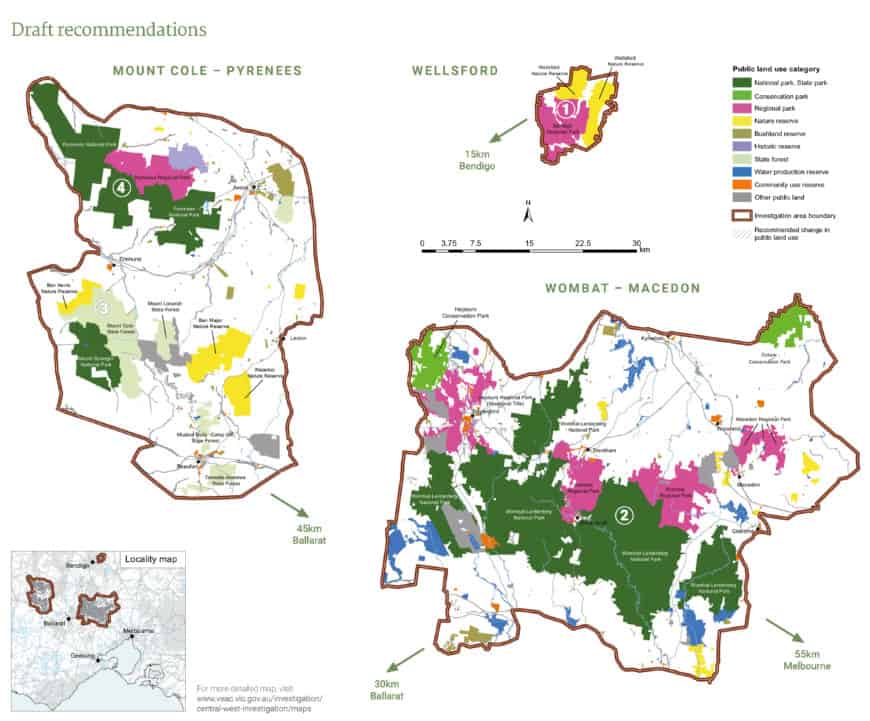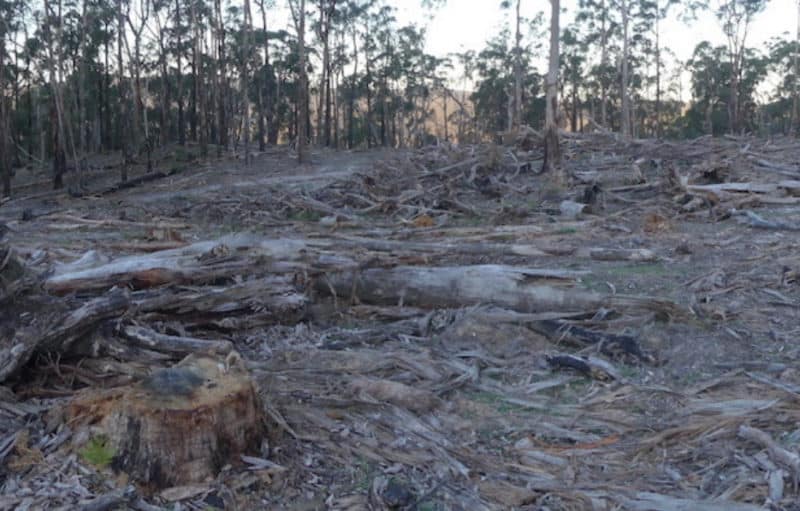PARK WATCH September 2018 |
Read our breakdown of the recommendations from the draft Central West Investigation released by the Victorian Environmental Assessment Council (VEAC).
Some are home to endemic and vulnerable species, others contain habitats that if protected would fill gaps in the formal reserve system.
In 2010 we released our report Better Protection for Special Places which assessed many of these forests of the Central West as being suitable for protection under the National Parks Act. VNPA welcomes the recommendations in the draft Central West Investigation released by the Victorian Environmental Assessment Council (VEAC) on 31 August.
The recommendations more than triple the total area within national and state parks in the Central West, adding to Victoria’s conservation estate and protecting more than 350 threatened species.
Not everything is rosy though, as there are some significant shortcomings around Mount Cole and Mount Lonarch forests, with only minor additions to the conservation estate.
We must ensure the next government, whoever that may be, commits to implementing VEAC’s recommendations.
See below for more detail on these forests and VEAC’s recommendations.
Click map for larger version.
For more detailed map, visit VEAC’s website.
1. Wellsford Forest (7,122 hectares)
Where: Just 15 kilometres north-east of the historic goldfields town of Bendigo.
Values: Dominated by eucalypts, wattles and wildflowers, it’s a place to explore and enjoy Victoria’s box-ironbark forests as they recover from a long history of logging. The forest provides important habitat for threatened wildlife: brush-tailed phascogale, diamond firetail, grey-crowned babbler, speckled warbler, and the nationally endangered swift parrot. It offers excellent examples of recovering forest, and contains native bushland of high conservation significance, linking patches in the north and south.
Threats: Logging operations with seven areas scheduled (including one withs swift parrot records); gold mining/prospecting; poorly maintained and illegal tracks causing erosion; and rubbish dumping.
VEAC recommends: Wellsford Forest to include an addition of 3,950 hectares to the Bendigo Regional Parks and the creation of a 3,160-hectare Wellsford Nature Reserve which would cover almost half of the Wellsford Forest.
2. Wombat Forest (45,100 hectares)
Where: Between Daylesford, Woodend and Ballan.
Values: Large, beautiful forest with huge diversity including over 360 indigenous plant and 180 native animal species. The Wombat bossiaea and Wombat bush-pea occur nowhere else but Wombat Forest. Contains 25 rare, vulnerable or threatened plants and 15 threatened fauna species such as the spot-tail quoll, growling grass frog, powerful owls, and brush-tail phascogale.
Threats: Logging operations with 50 logging areas scheduled; gold mining/ prospecting; feral animals; weeds; poorly maintained tracks and signage; and poorly-planned prescribed burning.
VEAC recommends: Wombat Forest to have significant additions, with an increase in the protection of around 28,000 hectares in a new Wombat-Lerderderg National Park and 9,000 hectares in a new Wombat Regional Park located in two parts.
3. Mount Cole Forest (9,000 hectares)
Where: Just off the Western Highway, 25 kilometres from the township of Beaufort, and an hour west of Ballarat.
Values: Small patch of forest (around 9,000 hectares), rising to almost 900 metres where snow gums can be found. It is home to one of Victoria’s most popular walking tracks, the Beeripmo Walk. Its forest harbours over 130 different native birds, nine threatened fauna species, 13 threatened flora species, three endangered vegetation types and two vulnerable vegetation types, under-represented elsewhere in Victoria’s formal reserve system.
Threats: Forty per cent of the area is zoned for some sort of logging including clearfell. Little of the accessible high production timber forests at Mount Cole have been protected in national parks or other reserves. See more overleaf.
VEAC recommends: Mount Buangor National Park to be extended by 1,406 hectares, incorporating underrepresented EVC Grassy Dry Forest, protecting endangered Mount Cole grevillea. Also well as creating a 1,088-hectare Ben Nevis Nature Reserve on the northern flanks.
Mount Cole and Mount Lonarch are the big losers in the draft recommendations, with much of the area left open to logging. The recommendations fail to even protect the integrity of the Beeripmo Walk or the headwaters of the Wimmera River.
4. Pyrenees Forest (15,790 hectares)
Where: 180 kilometres from Melbourne and 70 kilometres north-west of Ballarat in the popular wine region.
Values: This high conservation value forest is home to 240 species of native plants and over 100 bird, 15 mammal and 16 reptile species including legless lizards, bearded dragons and tree goannas. A range of threatened species have been recorded including powerful owls, brush-tail phascogales, diamond firetails and a significant old tree site.
Threats: Logging operations, with 18 areas scheduled (including one with powerful owl records); gold mining/ prospecting; poorly maintained and illegal tracks causing erosion; and stock grazing.
VEAC recommends: Pyrenees Forest upgraded to a new Pyrenees National Park of 16,076 hectares, and a new Pyrenees Regional Park of 4,160 hectares.
Smaller reserves (8,420 hectares +)
Values: A raft of smaller state forest areas all have important natural values, including over 100 different plant species and records for threatened fauna species. These small but important areas include Cobaw Forest, Waterloo Forest, Trawalla Forest and Musical Gully Forest. Some have endemic species such as the unique Ben Major grevillea (also called the drooping grevillea) restricted to a small area north of Beaufort, near Waterloo. Others such as Cobaw include highly significant habitat with threatened fauna such as eastern pygmy-possum, powerful owl, brush-tailed phascogale and brown treecreeper.
VEAC recommends: Creation of a new Cobaw Conservation Park (2,453 hectares); new Hepburn Conservation Park (2,714 hecatres); new Waterloo Nature Reserve (1,695 hectares); and new Ben Major Nature Conservation Reserve (3,229 hectares), combining the existing Flora Reserve with adjacent bush. Dozens of new and expanded Bushland Reserves.
More
Find out about the extent of logging at Mount Cole in ‘Walking the Beeripmo clearfell trail‘ in the September 2018 Park Watch.
You can stay up to date on developments and support our campaign to protect the central west forests here.
Did you like reading this article? Want to be kept up to date about nature issues in Victoria? Subscribe to our email updates.
You can also receive our print magazine Park Watch four times a year by becoming a member. Find out more here.

